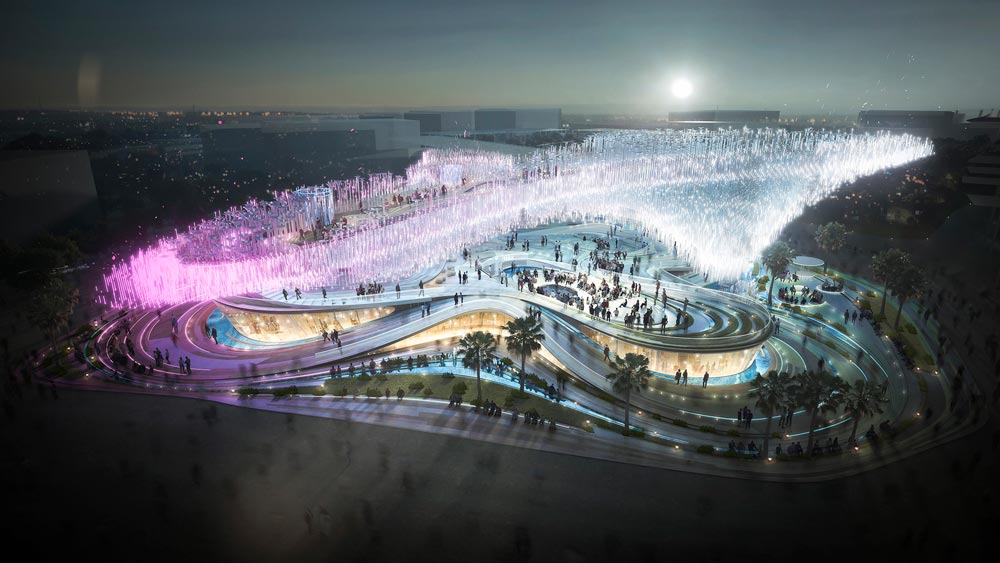Our world nowadays revolves around data. Softwares and codes are weaving intricate webs of computational connections in immersive dimensions. Design tools and graphic systems constantly upgraded every moment invites an influx of updates on how we interact with them. The learning curve for designers is spellbinding, and it delves into the depths of elaborate creations. The vision of designers can throttle and expand much more with the aid of these intuitive operational tools. Taking cues from the previous webinars, DesignMorphine Webinars 2 has stepped into the limelight once again delivering perceptive and engaging online lessons on enthralling creative programs. They have assembled an array of exclusive webinars on the topics – Bionic Articulations, Contorted Compositions, Kinetic Correlations & Scripted Synergies. These intuitive classes assert to deliver you with exceptional skills on integrated software in imagining and envisioning great environments, spaces, and volumes across multifarious symbiosis.
Bionic Articulations V1
Bionic Articulations V1.0 will focus on the design of bespoke components that are integrated as prosthetic extensions of the human body. Students will learn to create high-resolution bionic ornamentation of the human body using dynamic digital sculpting. The geometries can be considered at any scale, even representing conceptual architectural space. We will begin with the introduction to Zbrush and then start sculpting our prosthetic component using Dynamesh. We will explore different ways to create 3D base meshes such as Mesh Extract, Shadowbox, Remesh.
Primary and secondary shapes of our model will be generated using various additive and subtractive brushes. Alpha maps, masks, live booleans, snapshot 3d and poly grouping techniques will be used to integrate details and articulations. Meshes will then be edited using deformations and transformers. A reverse high poly to low poly workflow will be followed to allow freeform experimentation of shapes initially and refining the model at the end using ZSphere, ZModeller and ZRemesher tools. Details from a high resolution mesh will be projected onto a refined mesh containing multiple levels of subdivision.
[maxbutton id=”16″ url=”https://designmorphine.com/education/bionic-articulations-v10″]
Contorted Compositions V1
Contorted Compositions V1.0 will explore parametric workflows that combine complex geometry design and procedural modeling using Grasshopper algorithms to create architectural spaces. Participants will be guided through different approaches for creating periodic surfaces and morphing them into compound pavilion topologies. The designs will be further detailed by applying diverse procedures and patterns that will articulate the complexity in the forms. Based on that, the geometries will be panelized and rationalized using optimal minimal geometry curvatures.
The algorithmic methodology will be used in combination with advanced modeling techniques in order to produce not only remarkable results but also series of logic groups, applicable in various design tasks. The workflow will go through high poly mesh editing, nurbs, and low poly modeling, using Grasshopper plugins and Rhino subD. The aim for DesignMorphine Webinars 2 will be to achieve precise and intricate geometry as an avant-garde architectural design with interconnects seamlessly and continuously. The resulting geometry will be considered habitable and as such real architectural details will be introduced into the designs for circulation and enclosure.
[maxbutton id=”16″ url=”https://designmorphine.com/education/contorted-compositions-v10″]
Kinetic Correlations V1
Kinetic Correlations V1.0 will investigate generative swarm-based systems, vectors, vector trails, and particle systems in Houdini. Participants will learn how to create and develop visually inspiring generative formations built on parametric principles and computational rules. The DesignMorphine Webinars 2 will tackle how to work with particles that are versatile and visually eye-catching. Particle systems will be manipulated in various flow types. These particle systems will be developed in VOPs, DOPs, and SOPs, and POPs with an understanding of the difference between the various environments.
In addition, students will be provided with an explanation of streams and how they work while getting an overview of how DOP networks and their connection types. Alternate particle generation methods will also be achieved such as converting imported mesh geometry into sources for particle simulations and displacement manipulations. We will give varying solid mesh geometry representations to the swarms as well as colors using a maps. Finally, we will show how to set up lights and cameras to do a basic rendering in Houdini’s Mantra render engine.
[maxbutton id=”16″ url=”https://designmorphine.com/education/kinetic-correlations-v10″]
Scripted Synergies V1
Scripted Synergies V1.0 will introduce students to agent based assemblies and systems by way of custom coding in Grasshopper. Participants will get basic understanding of scripting and algorithm design using C# and Object-Oriented Programming. The basis for learning will be an agent-based generative system, which will explore agents, diffusion-limited aggregation, Brownian motion, force fields etc. The code will be executed in Rhino/Grasshopper using the in-built GH C# code editor and Anemone. The first part of the webinar will introduce the participants to basic concepts of OOP and the C# language.
A number of classes (agents, attractors) will be written using the scripting editor to illustrate the mechanics of the language. The organization of classes will enable the participants to extend the designed system in various ways: adding more forces acting upon the agents, introducing new types of agents, attractors etc. The end result will be a complete agent-based generation system enclosed within the C# script/scripts. The results of the agent systems will be visualized by solid mesh plane spatial arrangements and flow lines materializing enclosures and pathways.
[maxbutton id=”16″ url=”https://designmorphine.com/education/scripted-synergies-v10″]




























the timing doesn’t work for me, will there be a recording of this event available for purchase afterwards?
Absolutely. You will have access to the recordings afterwards.